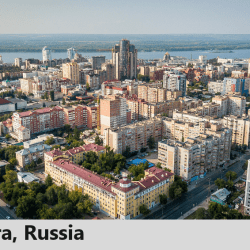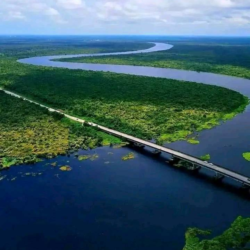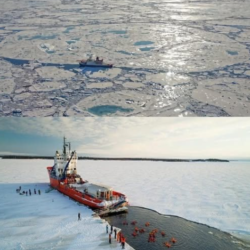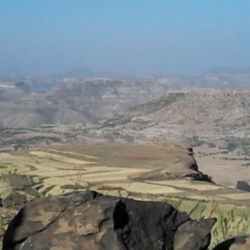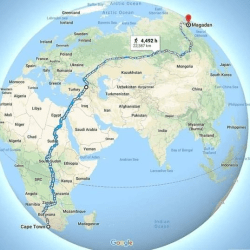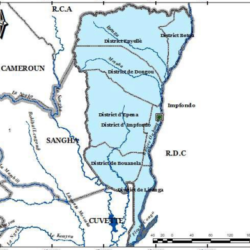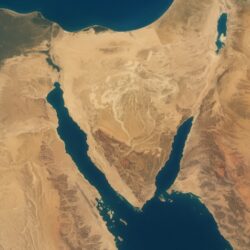Land area is one of the fundamental ways to measure a country’s physical size and scope. This list explores the ten largest countries globally by land area, detailing their geographic features, resources, and unique characteristics that contribute to their global significance.
1. Russia – 17.1 million square kilometers
Russia is the world’s largest country by far, covering approximately 17.1 million square kilometers across Eastern Europe and Northern Asia. Its vast landscape includes a variety of geographical features, from the Ural Mountains and Siberian plains to dense forests and frozen tundra. Russia spans 11 time zones and holds significant natural resources, including oil, gas, and minerals. Its territory houses some of the coldest inhabited places on Earth, like Siberia.
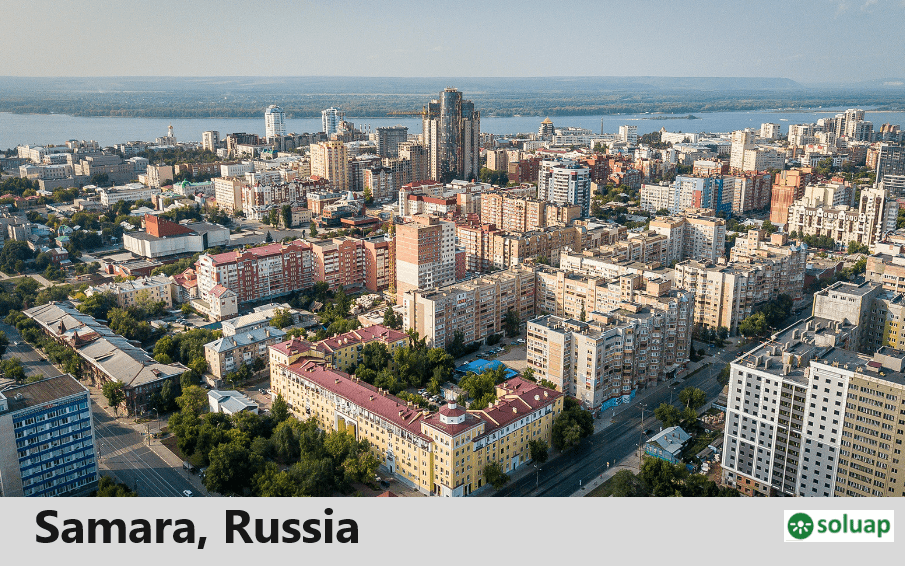
2. Canada – 9.98 million square kilometers
Canada ranks second in terms of land area, with 9.98 million square kilometers. Known for its breathtaking landscapes, including forests, tundra, and more than two million lakes, Canada contains around 20% of the world’s freshwater resources. Most of the Canadian population lives near the U.S. border, leaving much of its territory sparsely populated. This extensive northern country is rich in natural resources, like oil and minerals, and is a leading producer of timber.
3. United States – 9.63 million square kilometers
The United States covers 9.63 million square kilometers of land, making it the third-largest country by land area. Its diverse geography includes plains, mountains, forests, and coastal areas. The U.S. contains an array of climates and ecosystems, from the arid deserts of Arizona to the tropical environment in Hawaii. This variation in landscape supports a rich biodiversity and a wide range of natural resources, which fuel its economy.
4. China – 9.6 million square kilometers
China’s land area of 9.6 million square kilometers makes it the fourth-largest country globally. Its topography is vast and varied, encompassing deserts like the Gobi, extensive mountain ranges such as the Himalayas, fertile plains, and major river systems. China’s eastern coastal regions are highly populated and economically active, while the western regions, such as Tibet, are less populated and more rugged. As a significant agricultural and industrial hub, China’s land supports an enormous population and diverse economic activities.
5. Brazil – 8.5 million square kilometers
Brazil is the largest country in South America, covering 8.5 million square kilometers. It is home to the Amazon Rainforest, one of the most biodiverse areas on the planet, which plays a crucial role in carbon sequestration. Brazil also has extensive savannas and wetlands, like the Pantanal. Due to the Amazon’s vital ecological role, Brazil’s land area contributes significantly to global environmental health and biodiversity.
6. Australia – 7.68 million square kilometers
Australia covers 7.68 million square kilometers, making it the largest country in Oceania. The country is known for its vast deserts, unique wildlife, and remarkable natural features such as the Great Barrier Reef. Much of Australia’s population is concentrated in urban centers along the coast due to the arid and semi-arid conditions in the interior. Australia’s landscape includes diverse biomes, including rainforests in the northeast, grasslands, and deserts, with unique ecosystems that aren’t found anywhere else in the world.
7. India – 3.29 million square kilometers
India ranks seventh, with a land area of 3.29 million square kilometers. Known for its diverse landscapes, India has everything from the towering Himalayas in the north to the coastal beaches in the south. The Indo-Gangetic Plain is one of the most fertile regions, supporting dense populations. India’s varied topography also includes deserts in the west and dense forests across its landscape, which contributes to its rich biodiversity.
8. Argentina – 2.78 million square kilometers
With 2.78 million square kilometers, Argentina is the second-largest country in South America. Argentina’s geographic diversity includes the Pampas grasslands, the Andes mountains, and Patagonia. This diversity allows for a variety of climates, including arid deserts, subtropical rainforests, and subpolar regions in the far south. Argentina is known for its fertile lands, particularly in the Pampas, which make it one of the world’s leading agricultural producers.
9. Kazakhstan – 2.72 million square kilometers
Kazakhstan, covering 2.72 million square kilometers, is the world’s largest landlocked country and is situated in Central Asia. Its landscape includes steppes, mountains, deserts, and parts of the Caspian Sea. Known for its vast open plains, Kazakhstan has rich resources in minerals and fossil fuels. Its central location in Eurasia makes it strategically important and a key transit route in the region.
10. Algeria – 2.38 million square kilometers
Algeria, the largest country in Africa, spans 2.38 million square kilometers. Much of its land area is covered by the Sahara Desert, making it one of the driest countries. The Atlas Mountains to the north and coastal regions offer a contrast to the arid deserts in the south. Algeria’s land area is rich in natural gas and oil reserves, contributing significantly to its economy.
Significance of Large Land Areas for Countries
Natural Resources
Countries with extensive land areas often possess significant natural resources, such as forests, minerals, oil, and arable land. These resources provide economic advantages and fuel industries that support global trade.
Population Density and Urbanization
Larger countries can afford to have both densely populated cities and vast, uninhabited spaces, allowing for diverse uses of land. For example, while much of Canada and Russia remain sparsely populated, they contain large urban centers with concentrated populations.
Biodiversity and Ecosystems
Large land areas contribute to a country’s biodiversity. For instance, Brazil’s vast Amazon Rainforest supports countless plant and animal species, while Russia’s forests and tundra support unique ecosystems.
Geopolitical Influence
Countries with large land areas often hold significant geopolitical power due to their size and resources. Russia, the United States, and China are prime examples of countries that wield global influence, partly due to their vast territory and the economic opportunities it provides.
These top ten largest countries by land area demonstrate how size impacts natural resources, biodiversity, economic potential, and global influence. Their diverse landscapes and climates support unique ecosystems, contributing to their individual and global significance.
